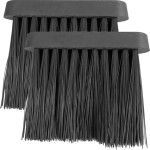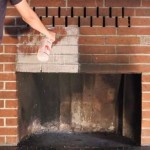Wall Heater Fireplace: Safety, Efficiency, and Aesthetic Considerations
Wall heater fireplaces represent an increasingly popular heating solution for homes and apartments. These appliances offer a blend of supplemental warmth, aesthetic appeal, and space-saving design. Understanding their various aspects, including safety features, efficiency ratings, installation requirements, and aesthetic options, is crucial for homeowners considering this heating alternative.
This article will explore various facets of wall heater fireplaces, providing a detailed overview of their functionalities, advantages, and potential drawbacks. Careful consideration of these points is essential to making an informed decision about whether a wall heater fireplace suits a specific heating need and lifestyle.
Safety Features and Regulatory Compliance
Safety is paramount when considering any heating appliance, and wall heater fireplaces are no exception. Reputable manufacturers incorporate numerous safety features to mitigate potential hazards. Overheat protection is a standard feature in most models, designed to automatically shut off the unit if it exceeds a predetermined temperature. This prevents overheating, which can lead to malfunctions or, in extreme cases, fires.
Another common safety feature is a tip-over switch for freestanding models. This switch automatically cuts off power to the unit if it's accidentally knocked over, preventing electrical shock and potentially stopping a fire from starting. Some models also include cool-touch housings, which minimize the risk of burns if someone accidentally touches the exterior of the heater.
Beyond integrated safety features, regulatory compliance plays a critical role in ensuring the safety of wall heater fireplaces. Organizations like Underwriters Laboratories (UL) and the Canadian Standards Association (CSA) rigorously test these appliances to meet specific safety standards. Certification from these organizations indicates that the unit has undergone extensive testing and meets established safety requirements. Consumers should always look for UL or CSA certification when purchasing a wall heater fireplace to ensure it meets recognized safety standards.
Additionally, following manufacturer's guidelines for installation, operation, and maintenance is crucial. Improper installation can compromise the safety features of the unit and increase the risk of accidents. Regular cleaning and inspection can help prevent potential problems and ensure the continued safe operation of the wall heater fireplace.
Another crucial safety aspect is related to the placement of combustible materials. It is imperative to maintain a safe clearance distance between the wall heater fireplace and any flammable materials such as curtains, furniture, or paper. Manufacturer guidelines will specify the required clearance distances, and these instructions must be followed strictly to prevent fire hazards. Furthermore, these heaters should never be used in bathrooms or other areas with high humidity unless specifically designed and rated for such use.
Energy Efficiency and Heating Performance
The energy efficiency of a wall heater fireplace directly impacts its operating costs and environmental footprint. Different types of wall heater fireplaces utilize varying heating technologies, each with its own efficiency characteristics. Electric resistance heaters convert electricity directly into heat, offering near 100% efficiency at the point of use. However, electricity generation itself often involves inefficiencies, so the overall environmental impact depends on the electricity source.
Infrared heaters warm objects directly rather than heating the air, which can result in more efficient heating of specific areas. This targeted heating can be advantageous in certain situations, such as heating a specific seating area in a room.
The heating performance of a wall heater fireplace is typically measured in British Thermal Units (BTUs) or wattage. The appropriate heating capacity depends on the size of the room and the desired temperature increase. A general guideline is that 10 watts per square foot of space is needed, but this can vary depending on factors such as insulation levels, window size, and ceiling height. Careful consideration of these factors is essential when selecting a wall heater fireplace to ensure it can adequately heat the intended space.
Thermostat control is another critical factor influencing energy efficiency. Models with adjustable thermostats allow users to precisely control the temperature, preventing overheating and minimizing energy waste. Programmable thermostats offer even greater control, allowing users to set different temperature schedules for different times of the day or week. This can further reduce energy consumption by lowering the temperature when the space is unoccupied.
Modern wall heater fireplaces often incorporate energy-saving features such as eco modes and sleep timers. Eco modes automatically adjust the heating output to maintain a consistent temperature while minimizing energy consumption. Sleep timers allow users to set the heater to turn off automatically after a specified period, preventing unnecessary energy use overnight.
Furthermore, the installation of a wall heater fireplace can impact its energy efficiency. Proper insulation around the unit can prevent heat loss, while strategic placement can optimize heat distribution. Considering these factors during installation can improve the overall efficiency of the wall heater fireplace.
Aesthetic Design and Installation Considerations
Wall heater fireplaces are not only functional heating appliances but also decorative elements that can enhance the aesthetics of a room. They are available in a wide range of styles, sizes, and finishes to complement various interior design schemes. From traditional designs with faux logs and flickering flames to modern minimalist styles with sleek lines and tempered glass fronts, there's a wall heater fireplace to suit virtually any taste.
The installation process for a wall heater fireplace varies depending on the type of unit. Some models are designed for surface mounting, while others require recessed installation. Surface-mounted units are generally easier to install, requiring only basic tools and hardware. Recessed units, on the other hand, require cutting an opening in the wall and may necessitate professional installation. It's crucial to follow the manufacturer's instructions carefully during installation to ensure proper functionality and safety.
When choosing a location for a wall heater fireplace, several factors should be considered. As mentioned earlier, maintaining adequate clearance from combustible materials is essential. Additionally, the unit should be located in an area where it can effectively distribute heat throughout the room. Avoid placing the heater behind furniture or in areas with poor air circulation.
The electrical requirements for a wall heater fireplace are another important consideration. Most units require a dedicated electrical circuit to prevent overloading the electrical system. The voltage and amperage requirements will vary depending on the model, so it's crucial to consult the manufacturer's specifications before installation. If unsure about the electrical requirements, it's best to consult a qualified electrician.
Many wall heater fireplaces come with adjustable flame effects and brightness settings, allowing users to customize the ambiance of the room. Some models even feature realistic crackling sounds to further enhance the fireplace experience. These features can create a cozy and inviting atmosphere, making the wall heater fireplace a focal point in the room.
Beyond the installation of the heater itself, the surrounding wall can also be enhanced to create a more visually appealing focal point. Adding decorative stone, tile, or wood paneling around the heater can create a more integrated and sophisticated look. These design elements can further enhance the aesthetic appeal of the wall heater fireplace and complement the overall decor of the room.
Consideration should also be given to the accessibility of controls. Whether the controls are manual or remote-operated, they should be easily accessible for convenient operation and adjustment. Proximity to power outlets should also be factored in, minimizing the need for long, unsightly extension cords.

60 Inch Recessed Wall Mounted Electric Fireplace 750 1500w Remote Oneinmil

Costway 5100 Btu 36 In Fireplace Recessed Ultra Thin Electric Wall Mounted Heater Furnace With Multicolor Flame Ghm0484 The Home Depot

Fodinghill 60 Insert Wall Mounted Electric Fireplace Low Noise Heater Mantel Features A Touch Screen 700w 1400w Com

Real Flame 65 In Wall Mount Recessed Electric Fireplace Insert Black 5560 The Home Depot

Livingandhome Black Wall Mounted Electric Fire Fireplace Temperature Adjustable 50 Inch Diy At B Q

Cambridge 78 In Electric Wall Mounted Fireplace Heater Black With Multi Color Flame Driftwood Log Display Adjustable Heat Remote Cam78wmef 2blk Com

Homcom Led Curved Glass Electric Wall Mounted Fire Place Fireplace Heater Diy At B Q

60 Inch Led Electric Fireplace Wall Mounted Insert Heater 9 Flame Colours

Alice 50 Electric Fireplace Inserts Recessed Wall Mounted Led Heater With 12 Flame Colors Touch Screen Remote Control Timer Logset Crystal Stones 500w 1500w Inches Com

The Ins And Outs Of Wall Mounted Fireplaces 5 Things To Consider Stylish
Related Posts








